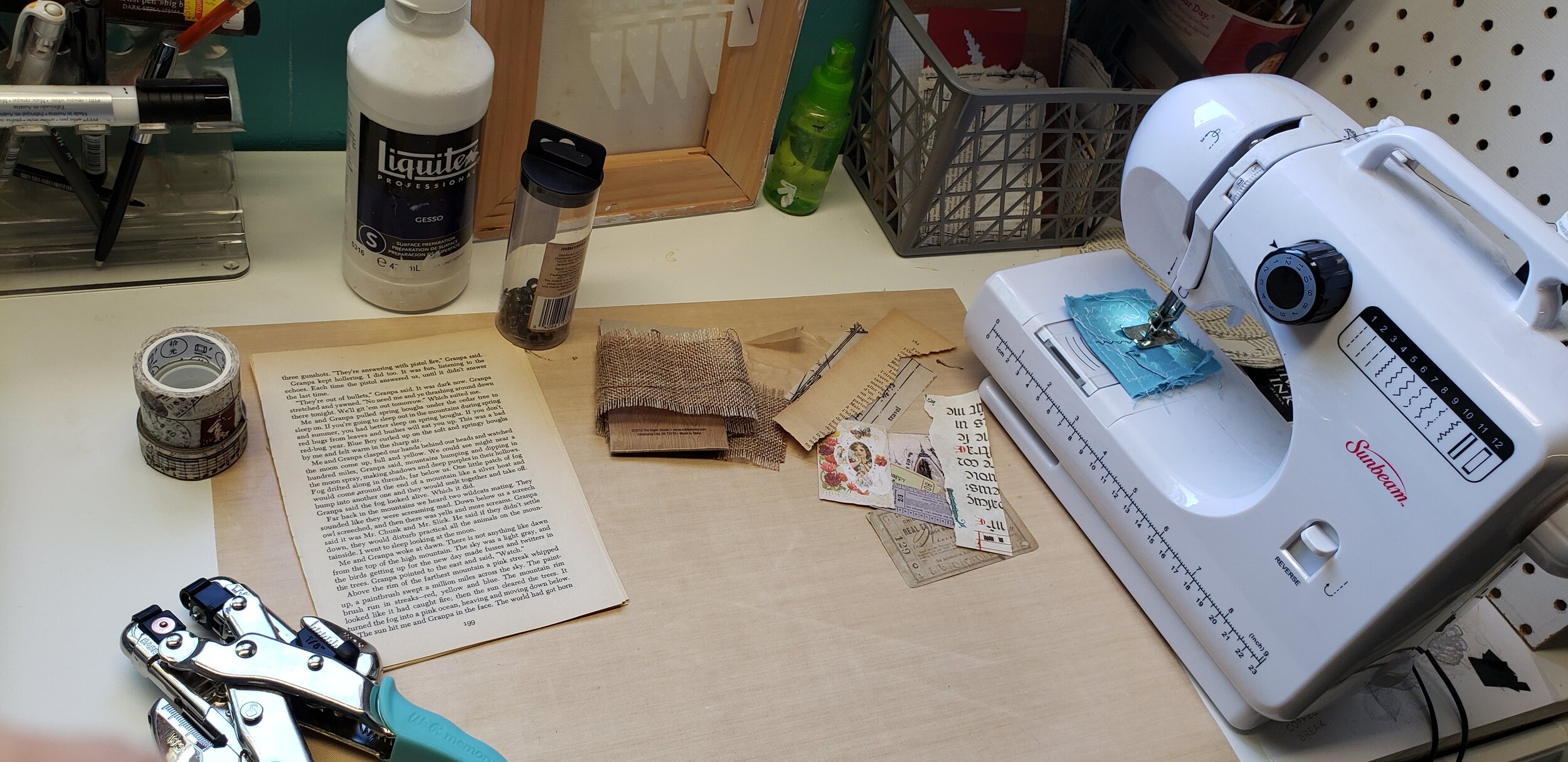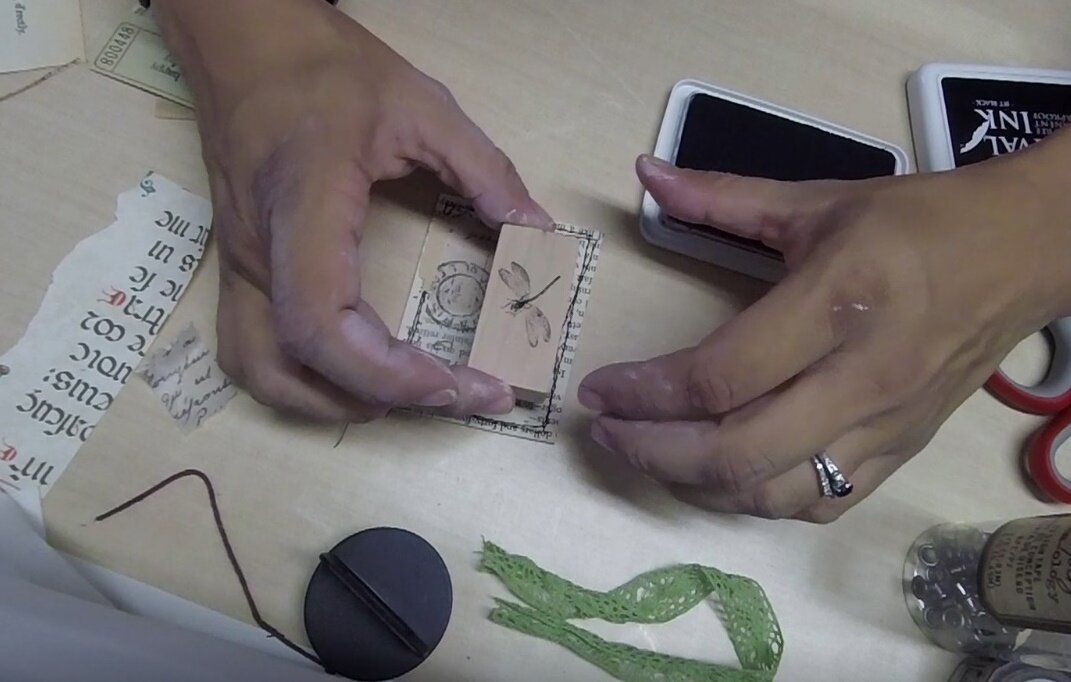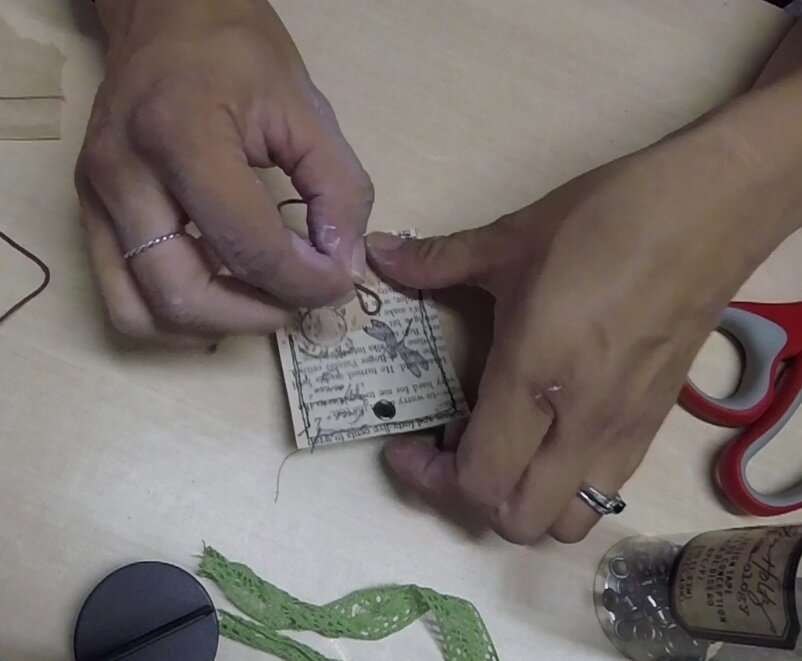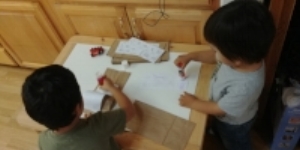Layering is both easy and hard!
Knowing how to layer, is a skill learned so well it becomes intuitive. I learned--and am still very much learning!--how to layer by essentially copying the techniques of those I admired. If you have time, check out France Papillon, who does amazing art journaling, Sigita Grunte, who does gorgeous vintage-style junk journaling, and Roben-Marie Smith, who creates beautiful and bright art and junk journals!
I started my mixed media journey in 2015, and I started with trying out art journaling. At the time, I didn't have a journal or anything, so I was using single pages. They're pretty embarrassing to look back at now, but here's the very first one I did:
First ever art journal page.
See how flat this looks? Not to mention non-cohesive? There was no central theme to this. It really was just using what I had and trying to figure how how they worked. And that's a big part of it. Knowing how to layer is first knowing how your materials work. For example, washi tape is called a tape, but often you need to glue it down.
My style has since evolved, and now that I'm junk journaling as well, I've taken a liking to the sort of vintage, shabby-chic style. I've a long way to go, but I've learned a few things that I'm going to share with you.
There are many videos out there that can show you how to layer. And layering can get super complicated, or be rather simple. But what about the videos that show something you really like and want to try, but don't necessarily show you how they did it?
You have to deconstruct it!
So let's begin with something along the basics, and try something simple.
Here's a binder insert I made out of scraps:
Front of binder inserts.
How would you deconstruct this? After all, there’s no “how-to” on how to make this. But it’s actually easy. The simple things are, the more complicated they look.
Let’s look at the tag on the left first. What do we see?:
*Paper base that’s kind of bookmark like (the tag itself essentially)
*Stamping
*Sewing
*Cheese cloth
*Scrap paper with words on it
*Dried flower
*Washi Tape
This tag, though maybe complicated looking, actually only has seven elements to it. The next key is to figure out the order.
What looks like it came first? Probably the sewing onto the paper base. Unless you’re sewing something onto it, that’s typically the case. Okay, so sewing first, then what? In this case, I stamped the dragonfly first, because I was trying to figure out what to do. So here we can say the stamping could have come first, or, as is also typical, it came last.
Cheese cloth usually is behind something, and here is no different. So after sewing around the edges, we glue down the cheese cloth. The words on the paper came from an old postcard. You can see the rips around the edges, indicating that a portion was ripped off and then glued onto the cheese cloth. We can see the flower is then placed on top (it was glued on), then a piece of washi tape placed so as to look as if the flower is taped down. Then another stamp of the bee, which again, could have been done first as well as last.
Now, let’s look at the second tag.
What elements do we see?:
*Paper strip like a bookmark
*Negative die cut with rough but not ripped looking edges
*Sewing
*Word stickers
*Washi tape
*Letter stamp images
Since the layers, like the washi tape, can be seen going over the sewing, we can deduce the sewing came first. So that’s the first step. After that, we can see the washi tape and the letter stamp images are on top of the negative die cut, which likely means (in this case yes) the negative die cut came next. After that’s glued on, since everything else looks a bit free floating (as in, the washi tape isn’t touching the letter stamp images and the words aren’t touching anything) it’s a bit more difficult to know what came next. But it’s also at this point, that smaller elements are put down after the larger ones.
Stickers are often the next layer, and in this case, the letter stamp images are two stickers kinda looking like one big one. The circle postage sticker was bigger than the square stamp, so I put the circle down first, then the square.
Washi tape is used to accent, so that came next. Then, since the top was blank, I used the word stickers to balance the over all blocky-ness because it was two small rectangular pieces.
Sometimes deciphering the layers is tricky, especially when there are a lot of them. But learning to pick out the elements one by one, and working out how and in what order they might be placed, helps to develop your intuition for layering. As you get more practice, you’ll develop the eye for it, and soon, your own style!
So, how many elements do you see in this one? And in what order do you think they were placed? Let me know in the comments!
A simple cover












































